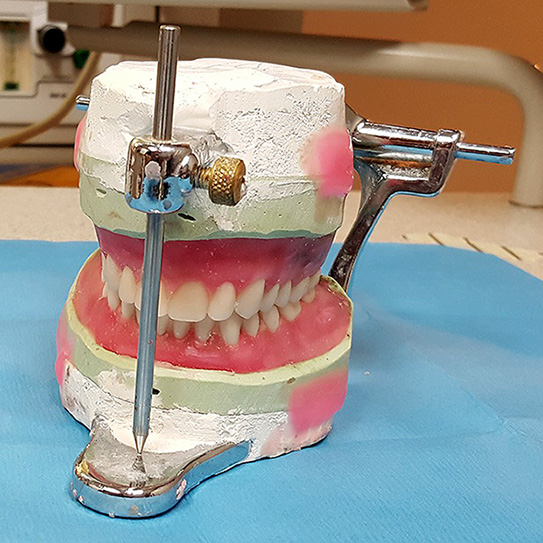Different Types Of Dentures

MANY OF US HAVE TO deal with tooth loss as we get older, whether because of an injury or tooth decay. What can we do when this happens to us? Fortunately, the field of prosthodontics (false teeth) has come a long way, giving us plenty of options for filling those gaps back in.
Dentures Throughout History
The first known dentures were made around 700 BC in northern Italy. These dentures were made from human and animal teeth, and although a set of these dentures would deteriorate quickly, they remained the norm for two and a half millennia. However, the industrial revolution in the 1800s led to a massive increase in the amount of sugar people consumed, and this caused the demand for dentures to increase dramatically, along with a demand for higher quality!
It was around that time that people started trying new materials, such as ivory, which lasted much longer. In fact, hippo and elephant ivory are what George Washington’s dentures were really made of, not wood! Nowadays, false teeth are made of porcelain or acrylic resin, depending on the situation. These are much stronger and more durable materials.
Modern Denture Types
Your individual situation will determine the type of denture that would work best for you. Obviously someone who still has some of their natural teeth won’t use the same type as someone with no natural teeth left. So what are the different types?
- Full dentures are a complete set of removable false teeth. They can be just the top teeth, just the bottom, or both. These may be made of porcelain, which imitates the look and feel of natural teeth, and they can last from 5-10 years.
- Partial dentures are for people who still have some healthy natural teeth. The new teeth fill the gaps so the natural teeth don’t start to shift and cause new oral problems. They are often made of acrylic resin, which won’t wear down the natural teeth like porcelain will, but don’t last as long.
- Fixed dentures, meaning non-removable dentures, come in a few different varieties. There are implants, which are surgically placed into the jaw bone and fuse over time to mimic the old root; bridges, which fill gaps by being cemented to the teeth on either side of the whole; and implant-supported dentures, which use implants as anchors for dentures.
Which Dentures Are Right For You?
Figuring out the ideal replacement teeth for you can be tricky, particularly if you’ve never needed them before, but that’s why you have us! Schedule a visit with us as soon as you can so we can talk about what type you need and set up a plan to get you on your way back to a bright, full smile!







My daughter and I love going to see Dr Aparna Sadineni and her professional staff. We never have to wait and the staff knows us like a second family. I highly recommend this office!